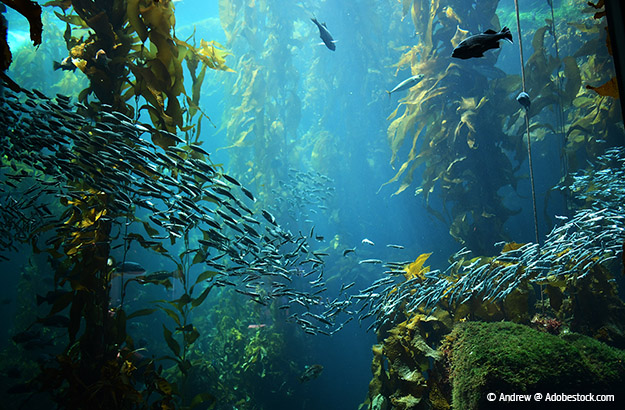New EUMOFA report: a deep-dive into the blue bioeconomy

date: 18/12/2020
The 2020 edition of EUMOFA’s “Blue Bioeconomy. Situation Report and Perspective” focuses on three topics critical to the future of the sector:
- Integrated Multi-Trophic Aquaculture (IMTA);
- the use of fish rest raw material (RRM) in Denmark;
- cell-plant technology and cellular mariculture.
Integrated Multi-Trophic Aquaculture: an ecosystem on its own
Integrated Multi-Trophic Aquaculture (IMTA) is called for pilot projects to promote its practice.
However, despite its proven environmental and economic benefits, adoption by mainstream producers is slow. More commercial-scale evidence is likely needed to convince the industry.
Reusing fish waste in Denmark
The second section of the report is a case study from Denmark about the use of fish rest raw material (RRM). This is essentially all the useful material removed from fish and seafood when preparing it for food use.
Denmark is a big seafood nation and that includes massive volumes of fish rests: more than 500,000 tonnes in 2019. The case study found that RRM is mainly used for fishmeal and fish oil, animal feed, biogas, and indirect human consumption. It is most lucrative when utilised for food additives or supplements, such as Omega-3 capsules.
Seafood from cells, not plants or animals
The final part of the report deals with cellular mariculture, an emerging technology whereby marine products are produced from cell cultures rather than from whole plants or animals. Such systems are a potential renewable source of valuable compounds, flavours, fragrances and colorants, which cannot be produced by microbial cells or chemical synthesis.
Contrary to animal-based seafood, cell-based seafood can combine developments in biomedical engineering with modern aquaculture techniques, making it a versatile and promising technology altogether.
This is EUMOFA’s second situation report in the Blue Bioeconomy series. A fascinating read for those interested in sustainable innovation through renewable aquatic biological resources. Available in English only.
